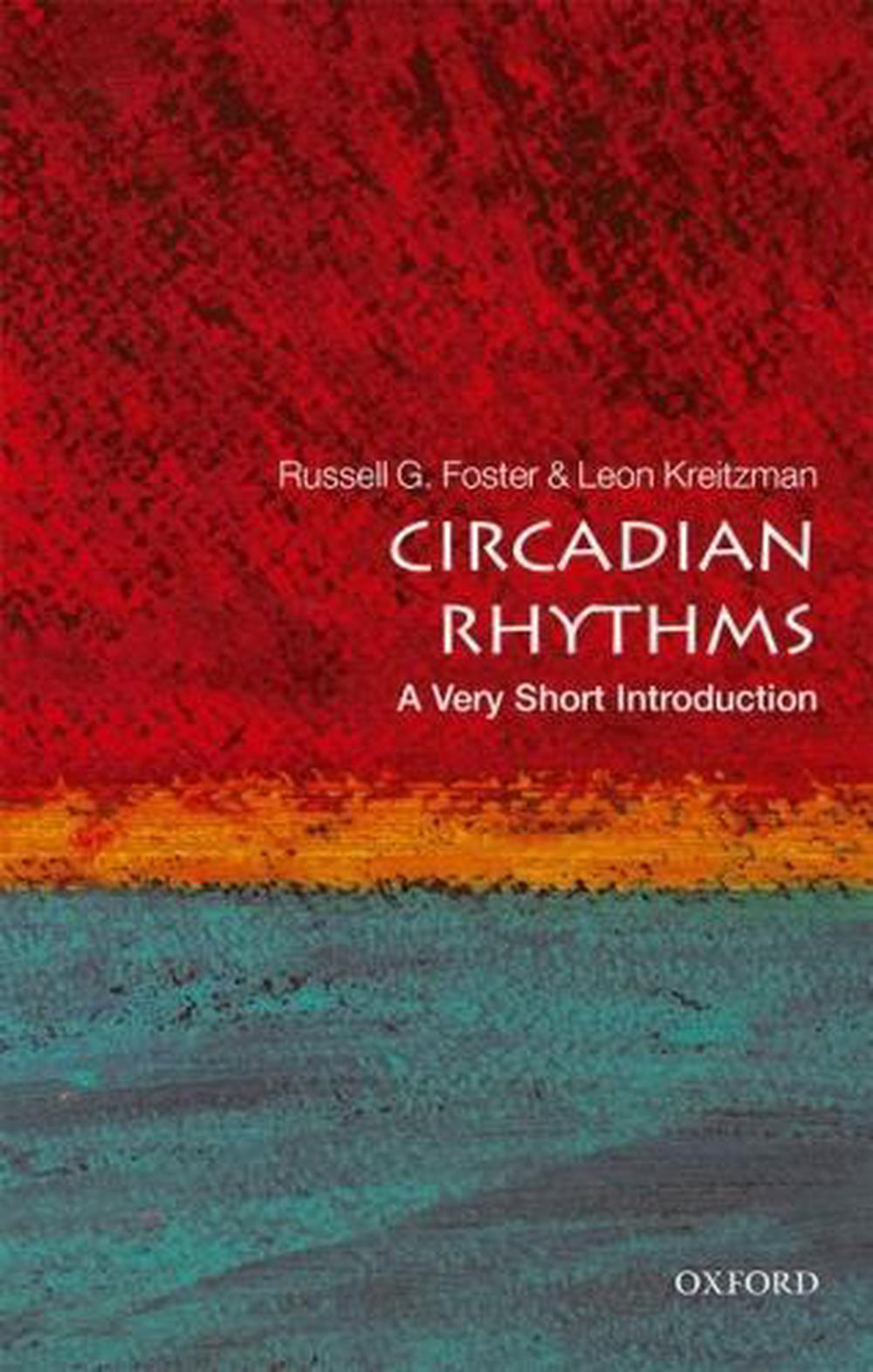
When you click on links to various merchants on this site and make a purchase, this can result in this site earning a commission. Affiliate programs and affiliations include, but are not limited to, the eBay Partner Network.
Circadian Rhythms: A Very Short Introduction by Russell Foster (English) Paperba

- Item No : 365578940185
- Condition : Brand New
- Brand : No brand Info
- Seller : the_nile_uk_store
- Current Bid : US $27.14
-
* Item Description
-
The Nile on eBay

Circadian Rhythms
by Russell Foster, Leon Kreitzman
This Very Short Introduction explains how organisms can 'know' the time and reveals what we now understand of the nature and operation of chronobiological processes. Covering variables such as light, the metabolism, human health, and the seasons, Foster and Kreitzman illustrate how jet lag and shift work can impact on human well-being.
FORMAT
PaperbackLANGUAGE
EnglishCONDITION
Brand New
Publisher Description
The earth's daily rotation affects just about every living creature. From dawn through to dusk, there are changes in light, temperature, humidity, and rainfall. However, these changes are regular, rhythmic and, therefore, predictable. Thus, the near 24 hour circadian rhythm is innate: a genetically programmed clock that essentially ticks of its own accord. This Very Short Introduction explains how organisms can "know" the time andreveals what we now understand of the nature and operation of chronobiological processes. Covering variables such as light, the metabolism, human health, and the seasons, Foster and Kreitzman illustrate how jet lagand shift work can impact on human well-being, and consider circadian rhythms alongside a wide range of disorders, from schizophrenia to obesity.ABOUT THE SERIES: The Very Short Introductions series from Oxford University Press contains hundreds of titles in almost every subject area. These pocket-sized books are the perfect way to get ahead in a new subject quickly. Our expert authors combine facts, analysis, perspective, new ideas, and enthusiasm to makeinteresting and challenging topics highly readable.
Table of Contents
1: Introduction2: How the clock works3: Light and the clock4: Synchronising the clock5: Day/night cycle6: Clocks and metabolism7: Clocks and human health8: The seasonal clock9: Where did the clocks come fromFurther readingIndex
Review
Circadian Rhythms is an ideal companion to Sleep, another excellent book in the same series and co-authored by Foster ... Foster and Kreitzman delve into the molecular biology that underlies the circadian rhythms, but they do so clearly and gradually. So even if you're not a biologist you'll be able to follow the discussions. * Mark Greener, Fortean Times *
excellent * David Lorimer, Network Review *Promotional
An overview of how organisms' chronobiological processes work, covering topics like light, metabolism, human health, and the seasons.
Long Description
The earth's daily rotation affects just about every living creature. From dawn through to dusk, there are changes in light, temperature, humidity, and rainfall. However, these changes are regular, rhythmic and, therefore, predictable. Thus, the near 24 hour circadian rhythm is innate: a genetically programmed clock that essentially ticks of its own accord. This Very Short Introduction explains how organisms can "know" the time and
reveals what we now understand of the nature and operation of chronobiological processes. Covering variables such as light, the metabolism, human health, and the seasons, Foster and Kreitzman illustrate how jet lag
and shift work can impact on human well-being, and consider circadian rhythms alongside a wide range of disorders, from schizophrenia to obesity.ABOUT THE SERIES: The Very Short Introductions series from Oxford University Press contains hundreds of titles in almost every subject area. These pocket-sized books are the perfect way to get ahead in a new subject quickly. Our expert authors combine facts, analysis, perspective, new ideas, and enthusiasm to make
interesting and challenging topics highly readable.Review Quote
Excellent.
Feature
Offers a comprehensive description of the science behind circadian rhythms
Describes how biological clocks enable animals to anticipate the regular daily changes in the external environment and synchronise their activities so as to maximise their chances of survival and reproduction
Describes how our own behaviour is regulated by our biological clocks over a 24 hour period
Part of the bestselling Very Short Introductions series - over seven million copies sold worldwideDetails
ISBN0198717687Author Leon KreitzmanSeries Very Short IntroductionsLanguage EnglishISBN-10 0198717687ISBN-13 9780198717683Format PaperbackPublisher Oxford University PressShort Title CIRCADIAN RHYTHMS A VERY SHORTMedia BookImprint Oxford University PressPlace of Publication OxfordCountry of Publication United KingdomDEWEY 571.77Year 2017Publication Date 2017-03-23Affiliation Head of Nuffield Laboratory of Ophthalmology; Director of Sleep and Circadian Neuroscience Institute; and Fellow of Brasenose College, University of OxfordUK Release Date 2017-03-23NZ Release Date 2017-03-23Illustrations 20 black and white halftonesPages 176Audience Tertiary & Higher EducationAU Release Date 2017-03-22Subtitle A Very Short Introduction


-
- The Lost Super Foods
- $ 37.00
- The Self-Sufficient Backyard
- $ 37.00
- A Navy Seals BUG IN GUIDE
- $ 39.00
- Childrens Books Phonics Lot 60
- $ 37.99
















